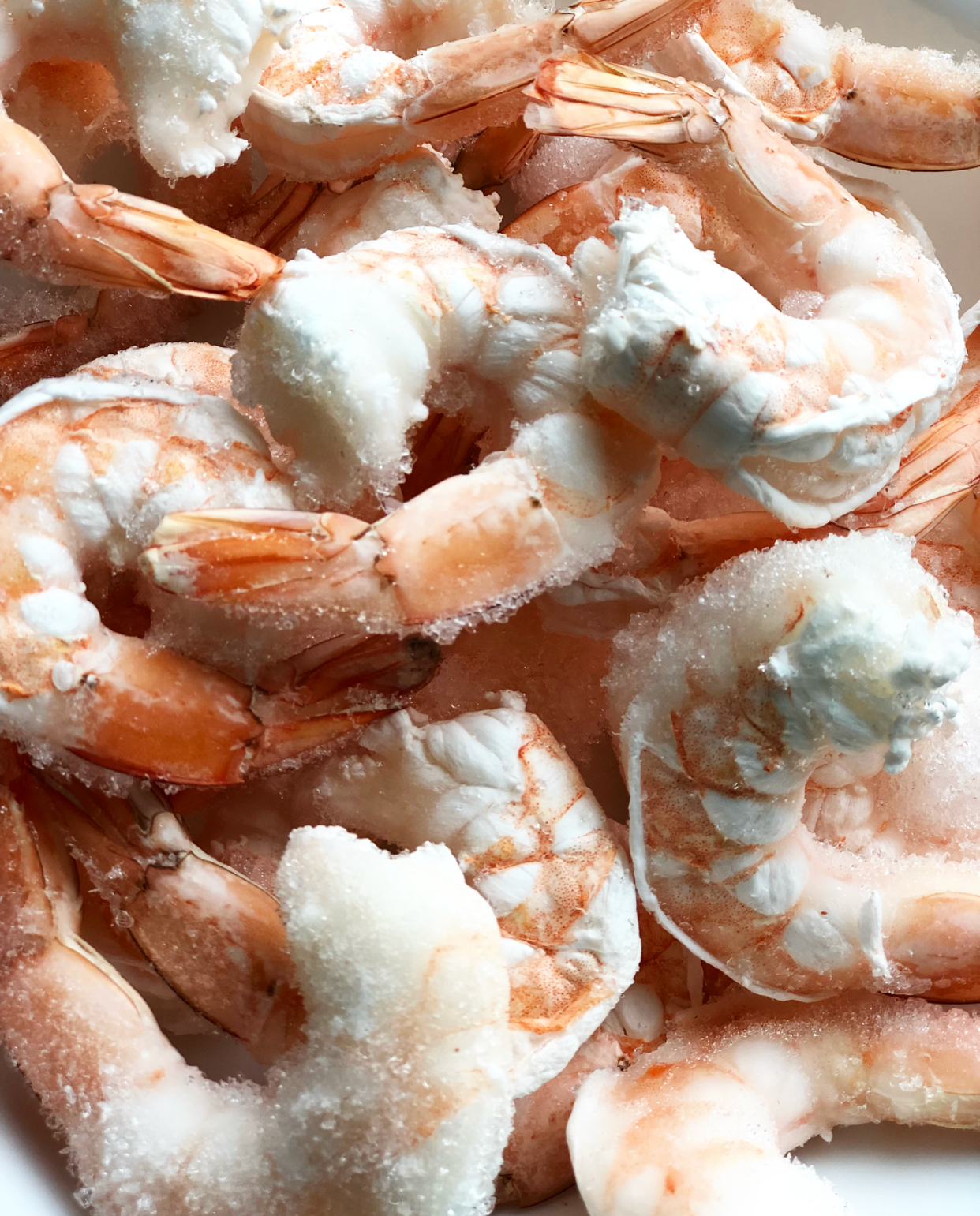Sustainability Profile: Shrimp
Imagine you’re enjoying New Years Eve mingling, talking with friends and reaching for another bite of that tasty shrimp when the thought hits you: are shrimp even sustainable? You then spend the rest of the night in seclusion Googling shrimp facts, reading confusing scientific journals and digging through the trash trying to find the shrimp’s packaging. Before you know it, the ball has dropped, the party is over and your shrimp fears have ruined your night. In this post I’ll save you from this New Years Eve crisis by explaining the ins and outs of shrimp sustainability.
Imported Wild-Caught Shrimp
Buying wild-caught shrimp from outside the U.S. is usually a no-no because these fishermen often use bottom trawling to catch the shrimp. In shrimp fishing, bottom trawls are basically big nets that connect to boats and scrape up shrimp from the bottom of the ocean.
This sounds good in theory, but in reality these trawls scrape up a lot more than just shrimp. They destroy coral reefs (which are already super unimaginably damaged from climate change) and sometimes catch sea creatures they aren't supposed to catch, like endangered sea turtles.
If you can verify that the fishermen didn't use bottom trawling to catch the shrimp in your local grocery store, it might be an okay buy. The easiest way to tell if wild-caught imported shrimp is sustainable is to check Seafood Watch. They have done oodles of research on sustainable fishing and have created a list of good buys, okay buys and bad buys in the world of shrimp.
Bottom line: Ditch the bottom trawl-caught wild shrimp.
Farmed Shrimp from Abroad
A lot of shrimp farms abroad (mostly in Asia and Mexico) lack strict environmental regulations, so they are pretty much destroying mangroves (aka the most amazing ecosystem ever). Mangroves are super important environmentally and socially because they provide a unique habitat for a bunch of critters, help prevent erosion, protect people near the mangroves from storms and contribute to those people’s livelihoods.
Shrimp farms built on or near mangrove lands are supes bad because they pollute the soil and water in and around the mangroves. This throws off the balances of the ecosystem, essentially wrecking these amazing environments and the lives of people who rely on them.
All that to say, you should probably pass on farmed shrimp from overseas. This is a pretty difficult thing to do because a lot of the shrimp in U.S. supermarkets are from international farms. Again, some international shrimp farms are responsible and sustainable, but you should check Seafood Watch before buying.
Bottom line: International fArmed shrimp can Destroy mangroves.
Farmed or Wild Shrimp from the U.S.
Generally, U.S. shrimp (farmed or wild caught) is pretty sustainable because we have pretty strict regulations on shrimp farming and shrimp management (yay us!!). Especially shrimp caught in ponds or raised in "fully recirculating" tanks are A plus options.
You might have to visit a more bougie grocery store and pay a little extra to get shrimp from the U.S., but it’s not impossible to find in the large chain supermarkets. To find out if the shrimp in your supermarket is from the U.S. just check the country of origin listed on the package or ask the butcher. If you can’t find U.S. shrimp, another sustainable and perhaps cheaper option is to buy imported shrimp that is recommended by Seafood Watch.

